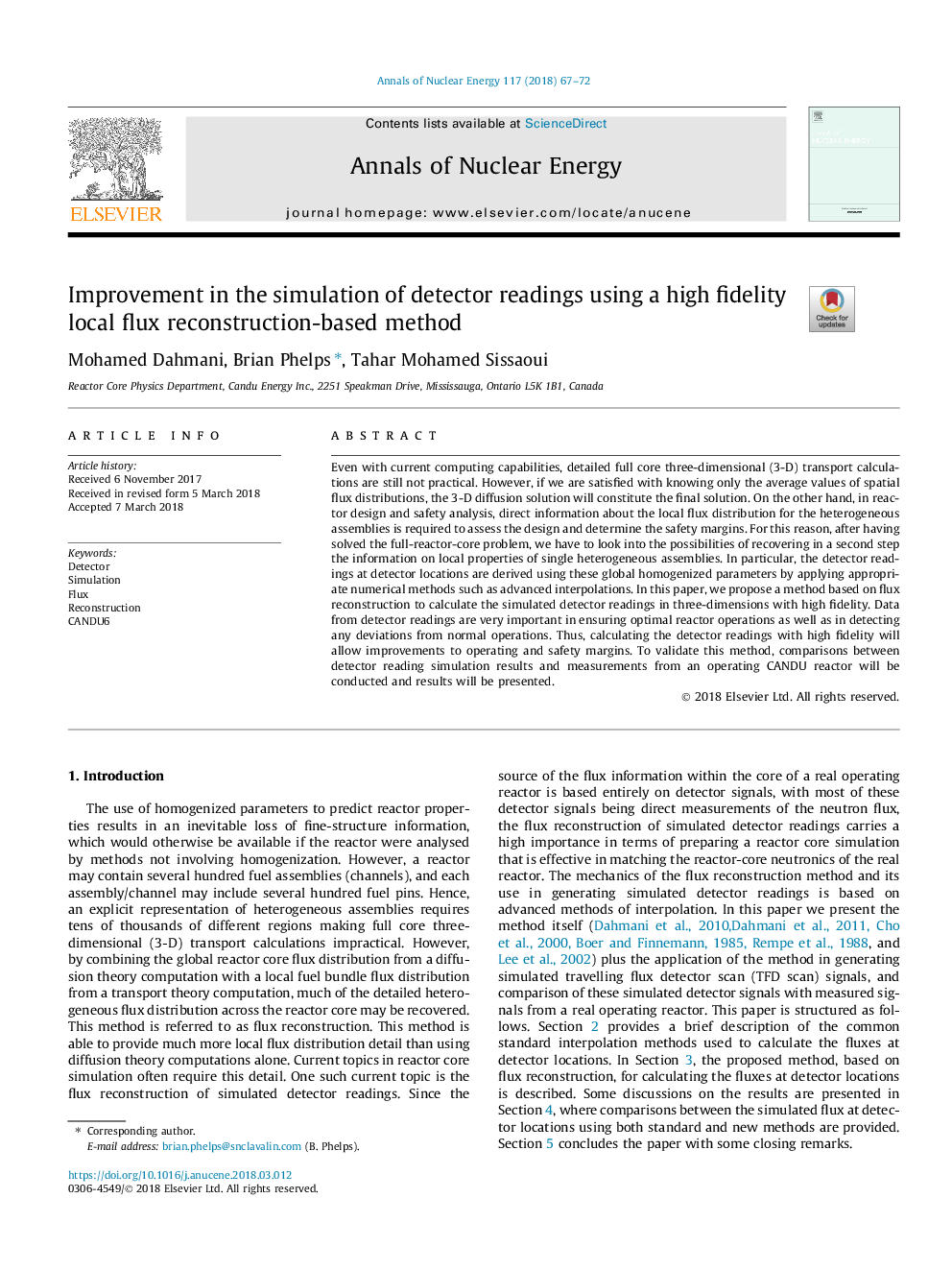| Article ID | Journal | Published Year | Pages | File Type |
|---|---|---|---|---|
| 8066984 | Annals of Nuclear Energy | 2018 | 6 Pages |
Abstract
Even with current computing capabilities, detailed full core three-dimensional (3-D) transport calculations are still not practical. However, if we are satisfied with knowing only the average values of spatial flux distributions, the 3-D diffusion solution will constitute the final solution. On the other hand, in reactor design and safety analysis, direct information about the local flux distribution for the heterogeneous assemblies is required to assess the design and determine the safety margins. For this reason, after having solved the full-reactor-core problem, we have to look into the possibilities of recovering in a second step the information on local properties of single heterogeneous assemblies. In particular, the detector readings at detector locations are derived using these global homogenized parameters by applying appropriate numerical methods such as advanced interpolations. In this paper, we propose a method based on flux reconstruction to calculate the simulated detector readings in three-dimensions with high fidelity. Data from detector readings are very important in ensuring optimal reactor operations as well as in detecting any deviations from normal operations. Thus, calculating the detector readings with high fidelity will allow improvements to operating and safety margins. To validate this method, comparisons between detector reading simulation results and measurements from an operating CANDU reactor will be conducted and results will be presented.
Keywords
Related Topics
Physical Sciences and Engineering
Energy
Energy Engineering and Power Technology
Authors
Mohamed Dahmani, Brian Phelps, Tahar Mohamed Sissaoui,
